Roosevelt Island, a thin, two-mile-long strip of land in the middle of the East River is home to roughly 12,000 people. The island has the nicest commute options of any neighborhood in the city as it is accessible by both a ferry and a three minute tram ride that “offers a rare chance to live purely in the moment in New York”1
IT’S NICE TO BE HERE
According to the Encyclopedia of New York, the Canarsie Indian’s name for Roosevelt Island was Minnehanonck, meaning “it’s nice to be here,” more of a platitude than a name really. The fact that the name is often associated with nearby Randall’s Island as well makes the name’s accuracy even more dubious.
In any event, the island’s next name, Varckens Eylandt, or Hog Island, is more plausible as it was used as farmland by several settlers, including Jonas Bronck (namesake of the Bronx) and Laurens Duyts, who was essentially Bronck’s indentured servant. Don’t feel too bad for Duyts, though. He was banished from New Amsterdam for the crime of selling his wife and forcing her to live in adultery with another man. As part of his sentence, he had a rope tied around his neck and was severely flogged before having his right ear cut off. Then, in perhaps the cruelest punishment of all, he had to move to New Jersey.
By 1668, New Amsterdam had become New York, and Hog Island was now Manning’s Island, named after Captain John Manning. After he was granted a patent on the island, Manning “built himself a splendid home there and drank his rum punch in peace and contentment for several years.”2
In 1673, Manning was installed as the interim commander in charge of Fort James, located at the tip of Manhattan. Unfortunately for him, this coincided with an invasion by Dutch troops intent on retaking their old colony. Manning attempted to rally the locals to help him man the fort, but he failed to muster much enthusiasm from the still predominantly Dutch population. Preferring the comforts of his punch bowl to engagement in a protracted battle he was sure to lose, Manning surrendered.
Later, despite being pardoned by the king, Manning was court-martialed and tried for cowardice. He was stripped of his powers and had to endure the public disgrace of having his sword broken over his head outside of City Hall. It must have been a pretty shoddily made sword because Manning survived and retired to his island and his punch.
I had to look into this further, and it turns out that sword breaking is part of a degradation ceremony, a ritualistic and public disgracing of a soldier reserved for the most serious crimes. The swords are filed down beforehand so one well placed blow will do the trick. The Brits were particularly adept at shaming, as evidenced by the below image and caption.
Eventually, Manning’s stepdaughter, Mary Manningham Blackwell, inherited the island and changed the name to Blackwell’s Island. The island remained in the family until 1828 when they sold it to the city for $32,000.
GANGSTER’S PARADISE
The sale marked the beginning of the “it’s not so nice to be here” era as the city, capitalizing on the island's isolation, quickly built a slew of institutions nobody wanted in their backyard. These included a prison, a lunatic asylum, and a poor house. The lines between these, both in public perception and in the treatment of their inhabitants, were fuzzy at best.
Blackwell’s Island Penitentiary was the first building to go up, and like the city’s criminal population, it continued to expand until it covered over a quarter mile of the island’s southern end. Billie Holiday, William “Boss” Tweed, and Mae West were among its many prisoners.
In a 1913 letter to the mayor, the Commissioner of Corrections, Katherine Davis, described the treatment of Blackwell’s prisoners as "vile and inhuman" and the prison cells as "wet, slimy, dark, foul smelling,” and “unfit for pigs to wallow in."
Not all prisoners had such a hard time of it though. The jail was controlled by two factions, one Irish and one Italian, and gang membership afforded certain luxuries.
The leader of the Italian gang, Joseph “Joie” Rao, was described in a 1934 Time magazine article as a” big, swarthy gunman” who was “kept sleek and well-pressed by his underlings.” While there is no mention of him on their website, Joie was one of the Rao brothers, owners of the legendary Rao’s restaurant in East Harlem, still famous today for having “the hardest reservation in the world.”
In jail, Joie didn't have to worry about reservations as he had a private valet that would shine his shoes, press his clothes, and cook his meals for him.
The prisoners who ran the gang (or could afford to pay) ate like kings, taking the prime cuts from the cafeteria, leaving the ordinary prisoners with “a greasy stew with next to no meat in it, just fat.” The prison library had to be shut down after the inmates incinerated all the books, “volume by volume,” to cook their contraband steaks.
In addition to his pet goat, Rao kept a flock of pigeons on the roof, which he may have used to bring drugs to the island. Not to be outdone, the leader of the Irish gang, Edward Cleary, kept a German Shepard he named "Screw-Hater” tied to his bed.
The former police dog, knowing where to get the best steak, had switched allegiances, and would snarl and lunge at any guard who dared approach. The word "screw" was prison slang for "guard."

10 DAYS IN A MAD-HOUSE
As bad as the prison was, the asylum was worse. Seven years after the prison opened, the New York City Lunatic Asylum, the second-largest asylum in the country, began accepting patients. In a decision that must have seemed like a stroke of genius to those in accounting, convicts from the prison were put to work as nurses and attendants in the asylum.
"Everything had a lounging, listless, madhouse air, which was very painful. The moping idiot, cowering down with long disheveled hair; the gibbering maniac, with his hideous laugh and pointed finger; the vacant eye, the fierce wild face, the gloomy picking of the hands and lips, and munching of the nails: there they were all, without disguise, in naked ugliness and horror.”
If this description sounds vaguely Dickensian, that’s because it was penned by Charles Dickens himself, who was so disturbed by the conditions that he cut short his 1842 visit
.
In 1887, in a daring feat of investigative journalism, 23-year-old Nellie Bly, working for Joseph Pulitzer’s New York World, pretended to be insane so she could investigate the asylum. As soon as she made it into the mental hospital, Bly dropped her whole insanity shtick, though that didn’t seem to matter in the slightest.
From the moment I entered the insane ward on the island, I made no attempt to keep up the assumed role of insanity. I talked and acted just as I do in normal life. Yet, strange to say, the more sanely I talked and acted, the crazier I was thought to be. — The Anderson Intelligencer, October 20, 1887.
While there, Bly met several perfectly sane seeming women, including a German woman whose only apparent symptom was an inability to speak English.
In a series of articles and subsequent book, 10 Days in a Mad-House, Bly, who called the place a “ human rat trap,” recounted tales of abusive nurses, spoiled food, and ice baths in tubs of fetid bathwater. The conditions seemed intended to provoke insanity rather than cure it.
What, excepting torture, would produce insanity quicker than this treatment? Here is a class of women sent to be cured. I would like the expert physicians who are condemning me for my action, which has proven their ability, to take a perfectly sane and healthy woman, shut her up and make her sit from 6 a.m. until 8 p.m. on straight-back benches, do not allow her to talk or move during these hours, give her no reading and let her know nothing of the world or its doings, give her bad food and harsh treatment, and see how long it will take to make her insane. Two months would make her a mental and physical wreck.
After her expose was printed, a grand jury was convened, resulting in a $850,000 increase in the Department of Public Charities and Corrections' budget.
The distinctive Octagon, the only vestige of the facility’s past, is now home to luxury apartments, an oasis of “creature comforts and limitless opportunity on Roosevelt Island, which have been carefully curated to strike in harmony; serve and delight all the parts that make you…you.”
GOLDWATER
In the twenties, Blackwell’s was rebranded as Welfare Island, and the institutions that had made it infamous were slowly being replaced. Goldwater Hospital, built in 1939, was named after New York City Hospital Commissioner Dr. S.S. Goldwater.
Unlike the asylum and the penitentiary that preceded it, Goldwater Hospital was designed with the patient’s needs and comfort in mind; its terraces and light-filled hallways provided unparalleled views for patients with chronic illnesses like tuberculosis.
In 1996, Goldwater Memorial Hospital merged with Coler Memorial Hospital at the island’s opposite end, and in 2013, Goldwater was demolished, making way for Cornell Tech’s new campus.
Photographer and architect Charles Giraudet documented the hospital’s last days.
THE ISLAND NOBODY KNOWS
The Welfare Island bridge was built in 1955, connecting the island with Queens. Before the bridge’s completion, the only way a car could get onto the island was via an elevator from the Queensboro Bridge. Then, in 1962, the MTA announced that the East 63rd Street rail tunnel would extend into Queens and include a stop on Welfare Island, piquing the interest of urban planners everywhere.
Even before the subway announcement, future congressman and businessman Fredrick Richmond, whose apartment looked out onto the island, enlisted Victor Gruen, inventor of the indoor shopping mall, to come up with a plan.
Gruen’s proposal envisioned “the first 20th-century city,” with room for 70,000 inhabitants built on top of a 22’ high concrete platform running the length of the island. A series of slab-like towers, thirty to fifty-story concrete dominoes connected by air-conditioned walkways, would sit on the platform with vehicles and a system of conveyor belts for goods below. The plan was rejected.
Other proposals included moving bodies from Brooklyn and Queens’ overcrowded cemeteries to the island, building an underground nuclear power plant underneath the old hospital, and siting the Temple of Dendur (now in the Met) on the island’s southern tip.
In 1969, the city granted a 99-year lease to the New York State Urban Development Corporation (UDC), the same entity behind Battery Park City. The master plan, The Island Nobody Knows, was devised by Philip Johnson and John Burge and unveiled to the public at the Metropolitan Museum of Art. It divided the island into two medium-density residential clusters, with the bland but geographically accurate names of Northtown and Southtown.
According the the plan, the intent of the development, whose design echoes other brutalist utopias of the time, was to “create for all income levels an urban environment where the primary consideration is the quality of the urban environment itself.”
Thanks to support from affordable housing programs like Mitchell-Lama, the buildings provided housing to thousands who wouldn’t otherwise be able to afford an apartment in Manhattan.
By the 1970s, the word welfare had been stigmatized, and the UDC decided their urban utopia needed a new name. In 1973, the island was renamed yet again, this time in honor of President Franklin Delano Roosevelt.
GARBAGE SUCKS
You won’t see garbage bags on the sidewalks of Roosevelt Island or garbage trucks, either. That’s because most of the buildings are serviced by a network of 20” wide pneumatic garbage-sucking tubes all leading to a centralized transfer station where the collected garbage is compacted, sealed into containers, and trucked off the island.
Trash in the tubes, powered by giant centrifugal turbines, can reach speeds of over 60 mph, which can cause problems when residents cram items like Christmas trees, electric frying pans and cinder blocks into the garbage chutes. Any particularly tricky issues are still handled by the Swedish company that invented and installed the system 50 years ago.
Roosevelt Island is the only neighborhood in North America with its own “Automated Vacuum Collection System,” or AVAC. Disney World also has an AVAC, but, technically, it’s a kingdom.
In 2010, Juliette Spertus organized a fantastic exhibition, Fast Trash, that details the history and future of Roosevelt Island's AVAC system. It also includes some very sage advice from a student at The Child School on what not to put in the garbage.
CORNELL TECH
The newest addition to Roosevelt Island is the futuristic Skidmore, Owings & Merrill-designed Cornell Tech campus and research center, a collection of decidedly non-brutalist glass and steel buildings that frame different dramatic views of the Manhattan skyline and Long Island City.
Just beyond that, a shire-like expanse of goose-infested rolling hills leads past a cat colony and the ruins of the Renwick Smallpox Hospital to Louis Kahn’s Four Freedoms Park, a meticulously designed tribute in white granite to the island’s namesake, FDR.
SIGHTS AND SOUNDS
This week’s field recording, like many of the photographs, is all about the water. It is an island after all.
FEATURED PHOTOGRAPHER
I don’t remember when I first saw Barney Kulok’s BUILDING project, but I remember loving it despite having no idea what it was about. It turns out that he was photographing the construction site of Louis Kahn’s Four Freedoms Park. By choosing to focus on the minutia, the play of light on the byproducts of construction, rather than things like the 1,050-pound bronze bust of FDR or the sweeping views of Manhattan, Kulok has created a surreal, somewhat haunting portrait of a place assembled from details that most would overlook.




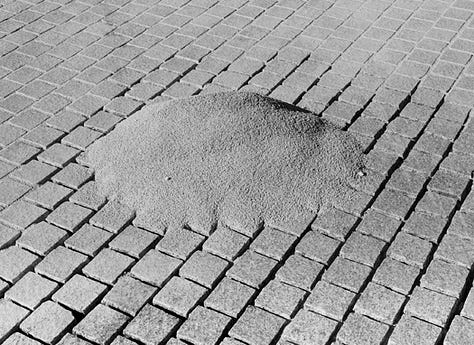

Barney keeps things mysterious on his site, too, with nary an image to be found, but this feature on Daylight Book's website is an excellent introduction to his work.
And, for all you offset printing nerds, here is a behind-the-scenes video of the book's printing.
I got a copy of BUILDING at the Strand for an amazing deal, and ,as of now, there are two left for anyone interested.
NOTES
A 1903 tour of Blackwell’s Island courtesy of Thomas Edison.
Now you can stay overnight on Roosevelt Island.
Reading about Joie Rao’s gourmet meals in Blackwell prison reminded me of the classic cooking scene in Goodfellas. It turns out that the character who plays Johhny Dio, searing the steak in this scene, is none other than Frank Pelligrino, then owner of Rao’s.
Roosevelt Island even has its own outsider psychedelia cassette label, the fantastic Island House Recordings, run by island resident Tim McManus.
A profile in Curbed on the first family to move into Roosevelt Island.
Dutch bad-boy Architect Rem Koolhaas wrote up his own proposal for Welfare Island in his manifesto, Delirious New York
His plan included arkhitektons, a “Counter-UN” across from the actual UN, and something called a Chinese Pool, which, if it is anything like this wave pool in China, I’m all for.
POSTSCRIPT
I covered the neighborhood of Meadwomere (and Warnerville) last month, and just this past week, as part of her “The Neighborhood Speaks” feature, Anne Kadet paid it a visit too. Anne, who writes the indispensable Cafe Anne newsletter, did what I could never do: have a conversation. Several actually. All great.
Anne chewed the fat with Tommy Devanzo, Connie Kunkel, and Bebop Seaman. Yes, those are really their names. She also encountered one of my nemeses - the angry porch lady with “death-ray laser eyes” who told her to scram. Every neighborhood has one of them. And, if we were lucky, every neighborhood would have a Cafe Anne write-up.
Update 4/21: I just found out Anne also profiled Roosevelt Island! You can read that here
https://www.nytimes.com/2006/04/30/nyregion/thecity/riders-in-the-sky.html
New Yorker, January 21, 1928







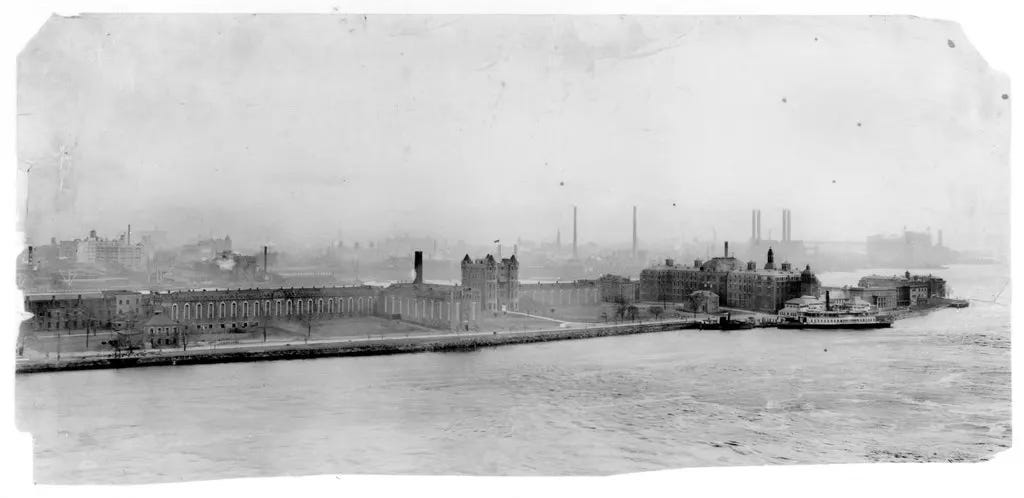
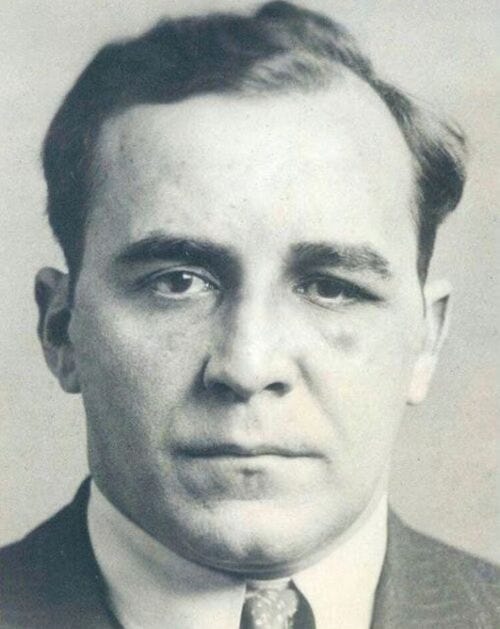

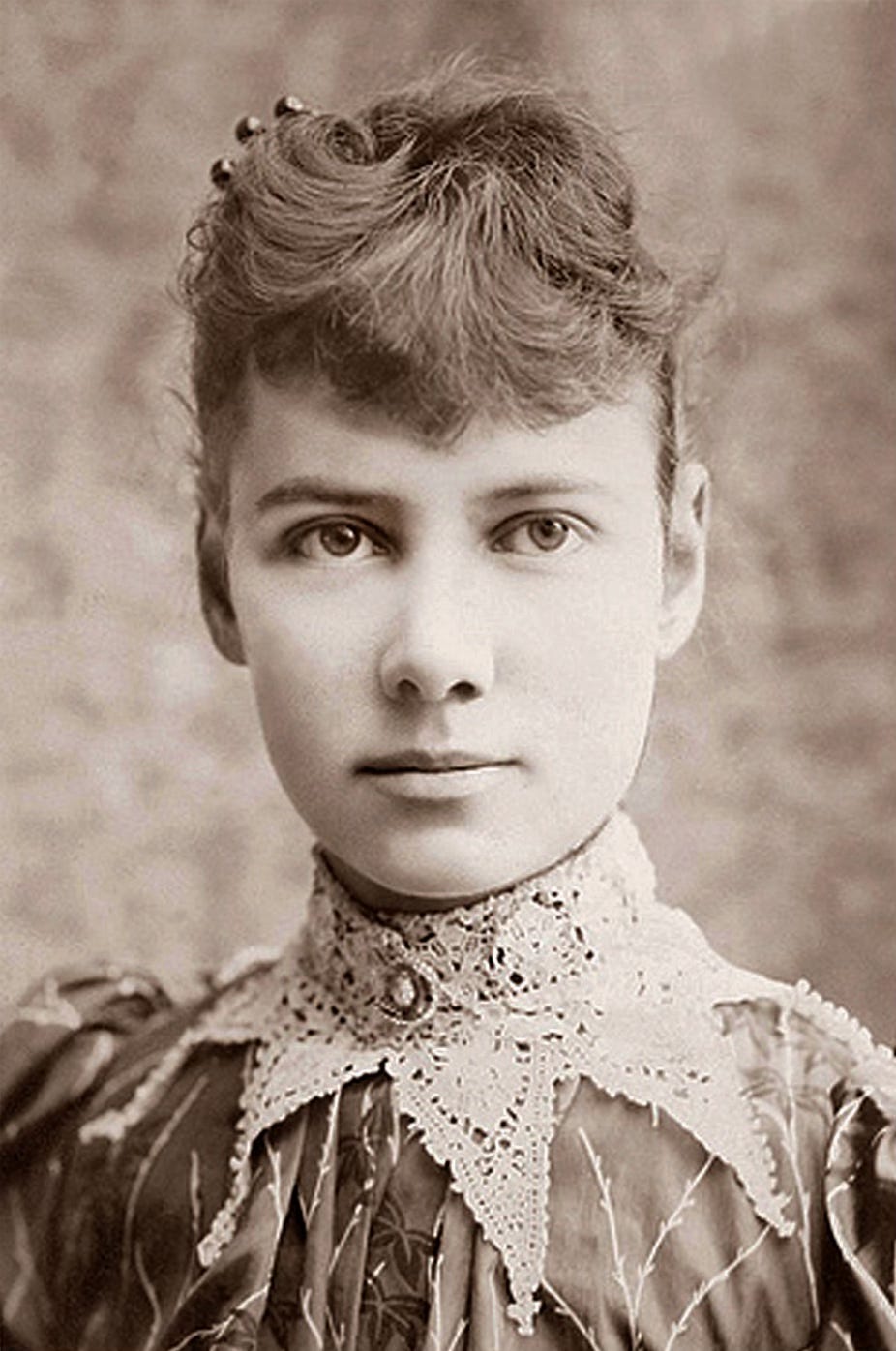
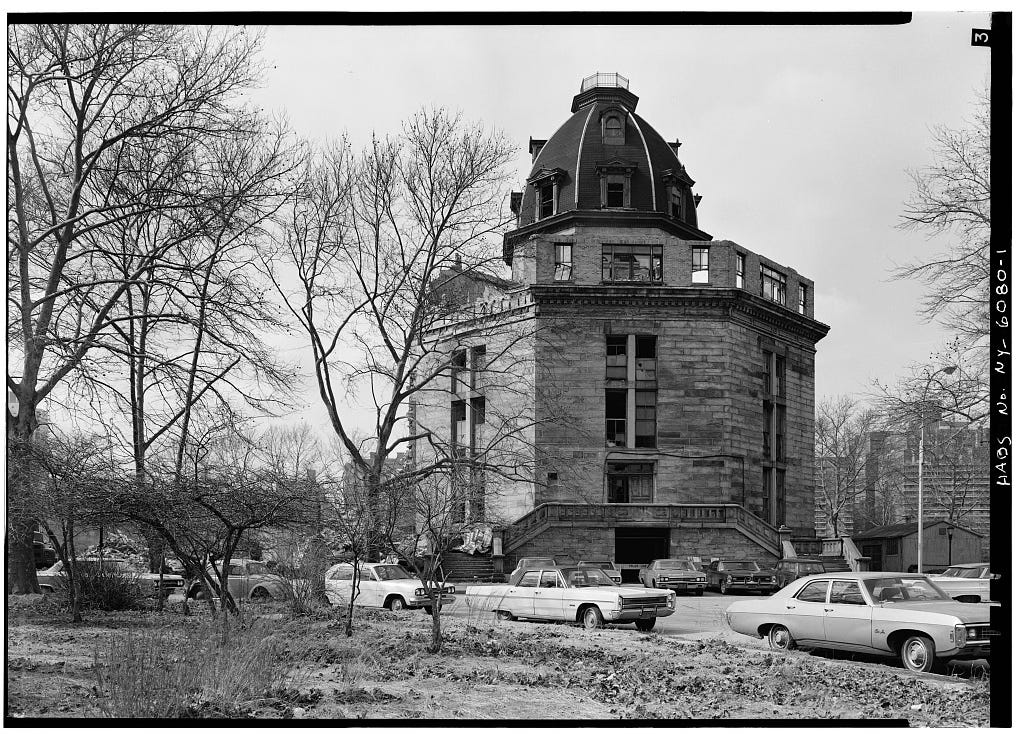
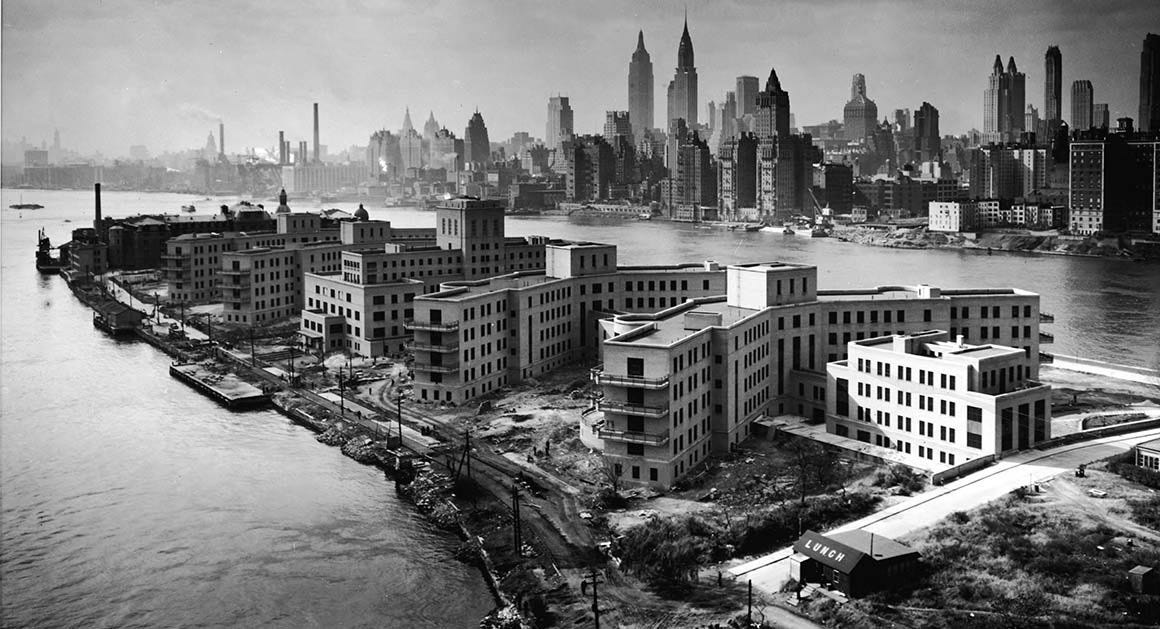


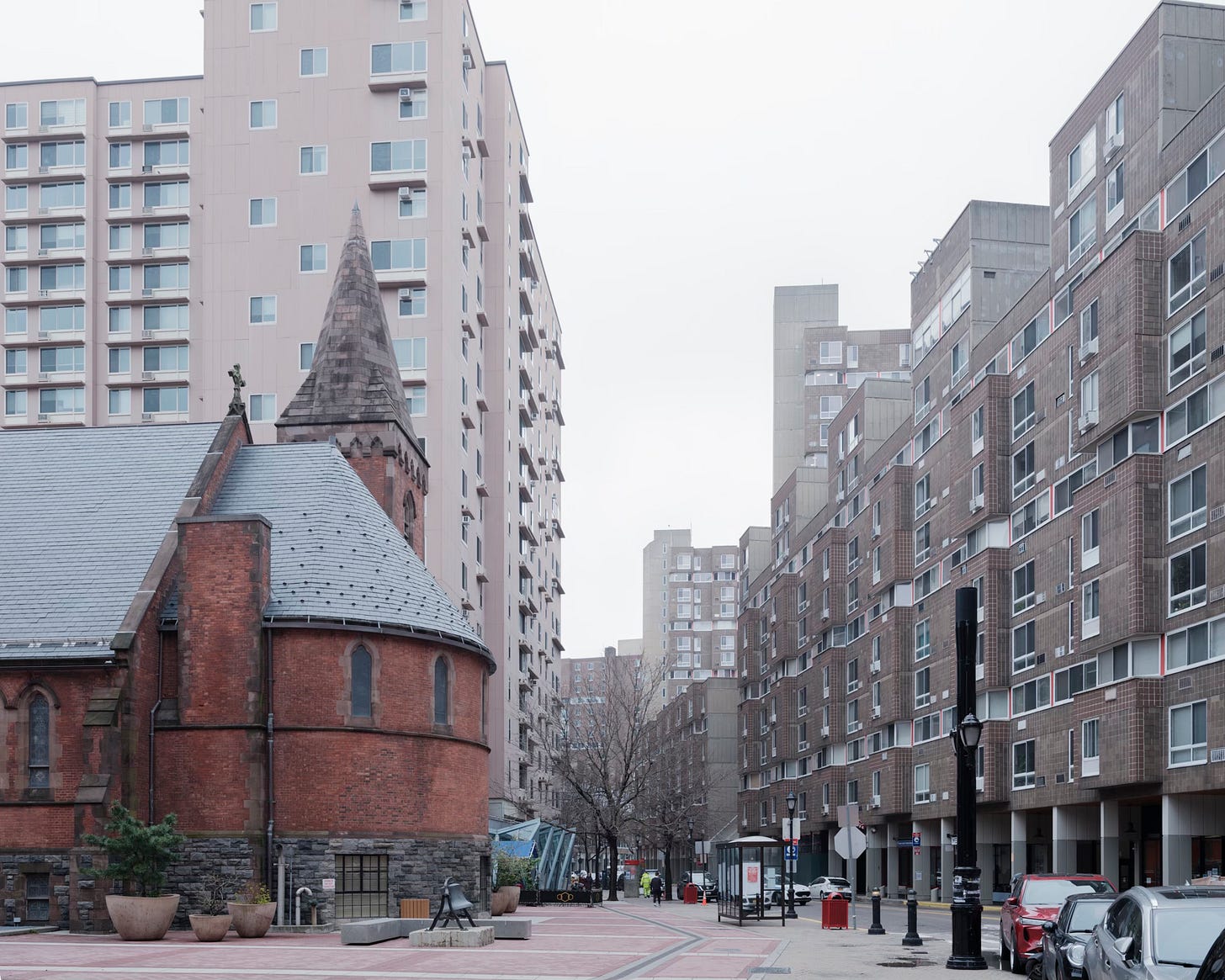



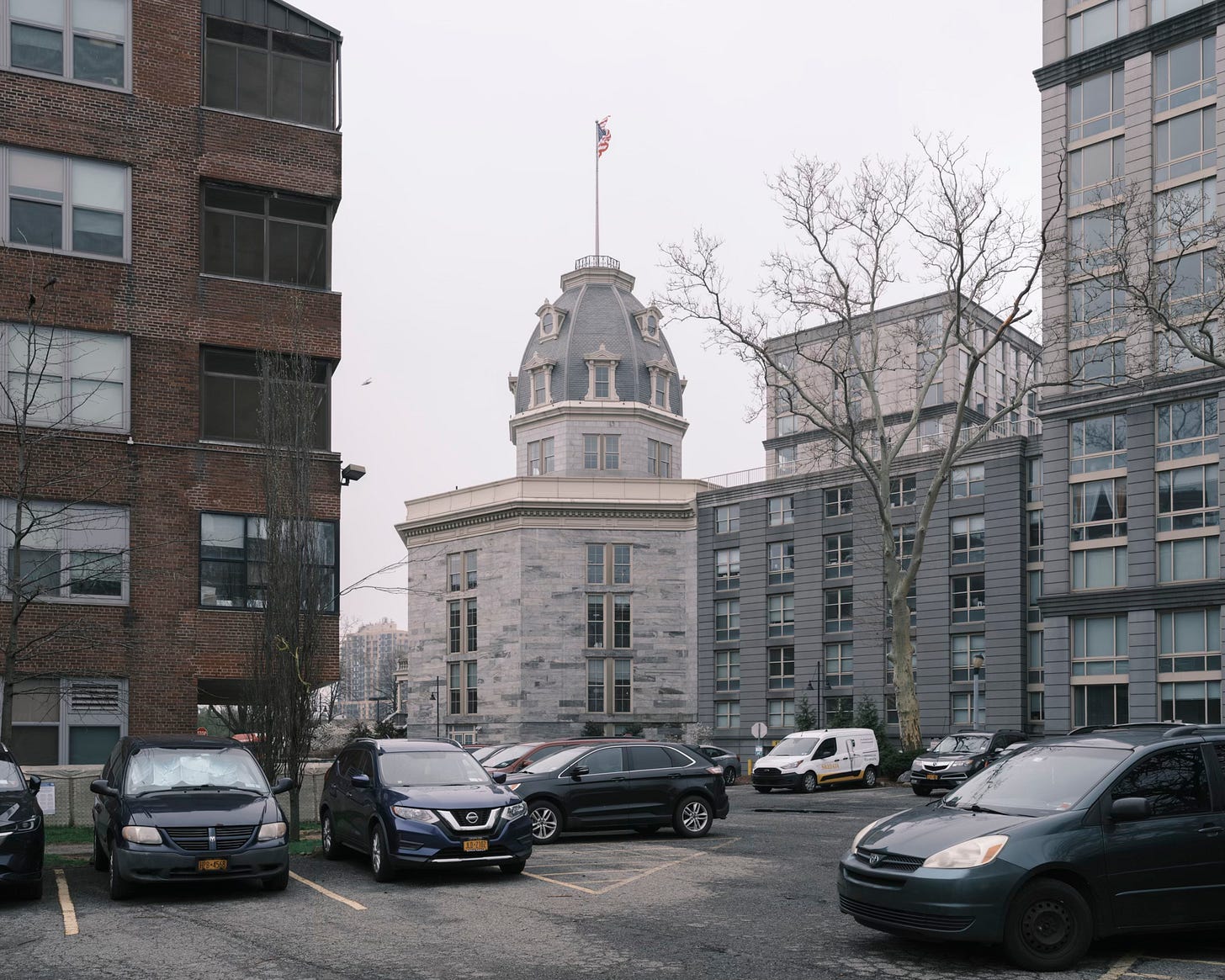
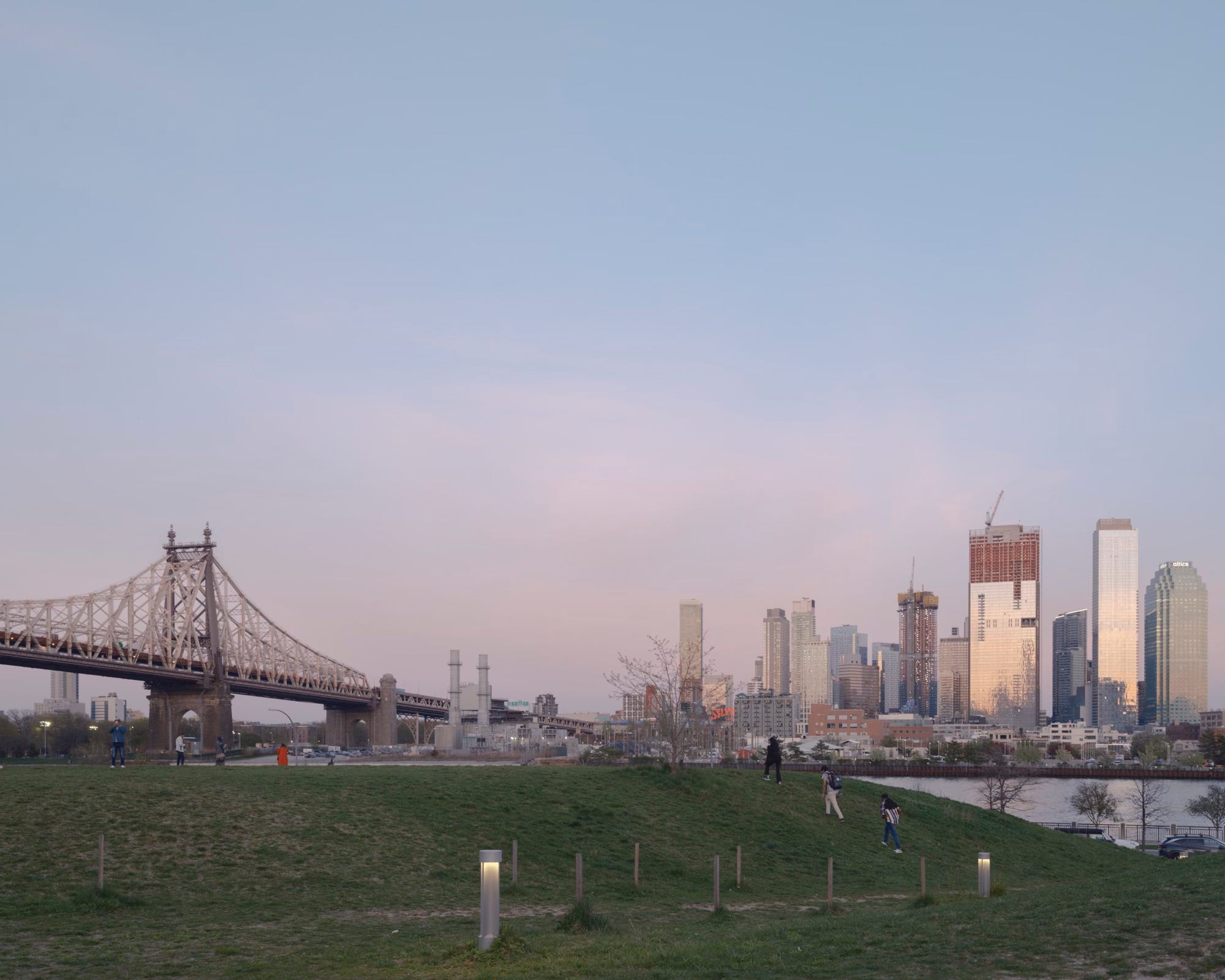





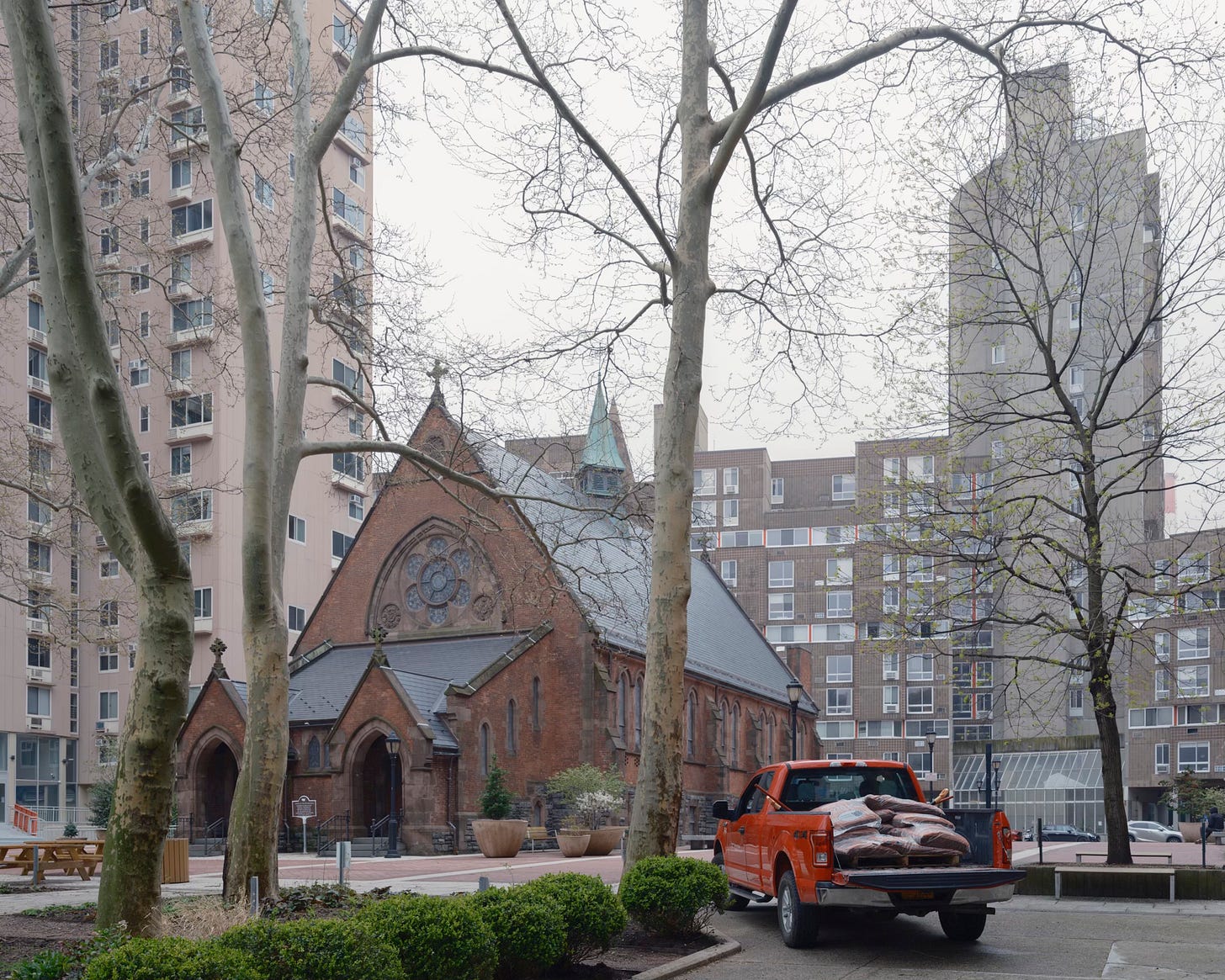

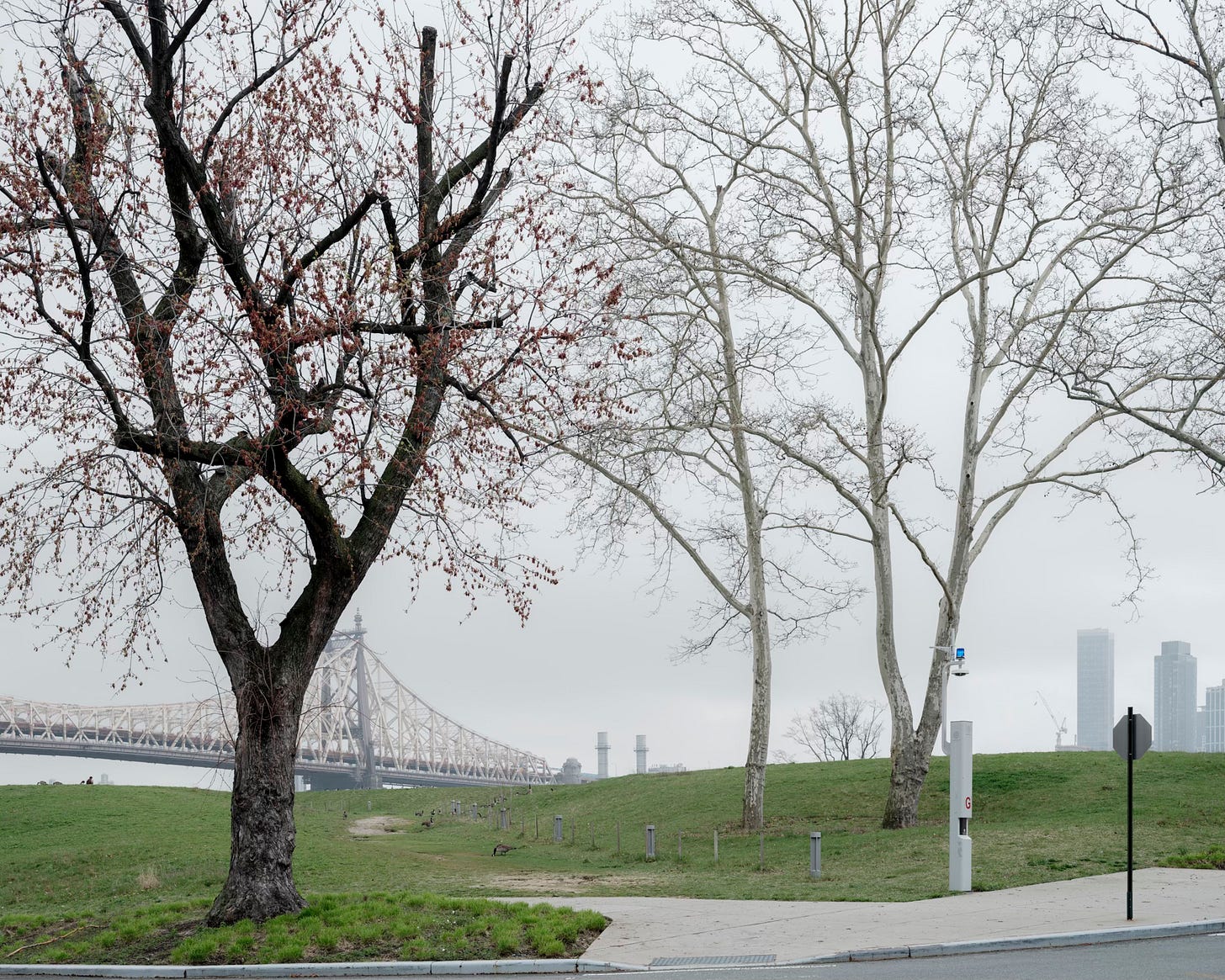
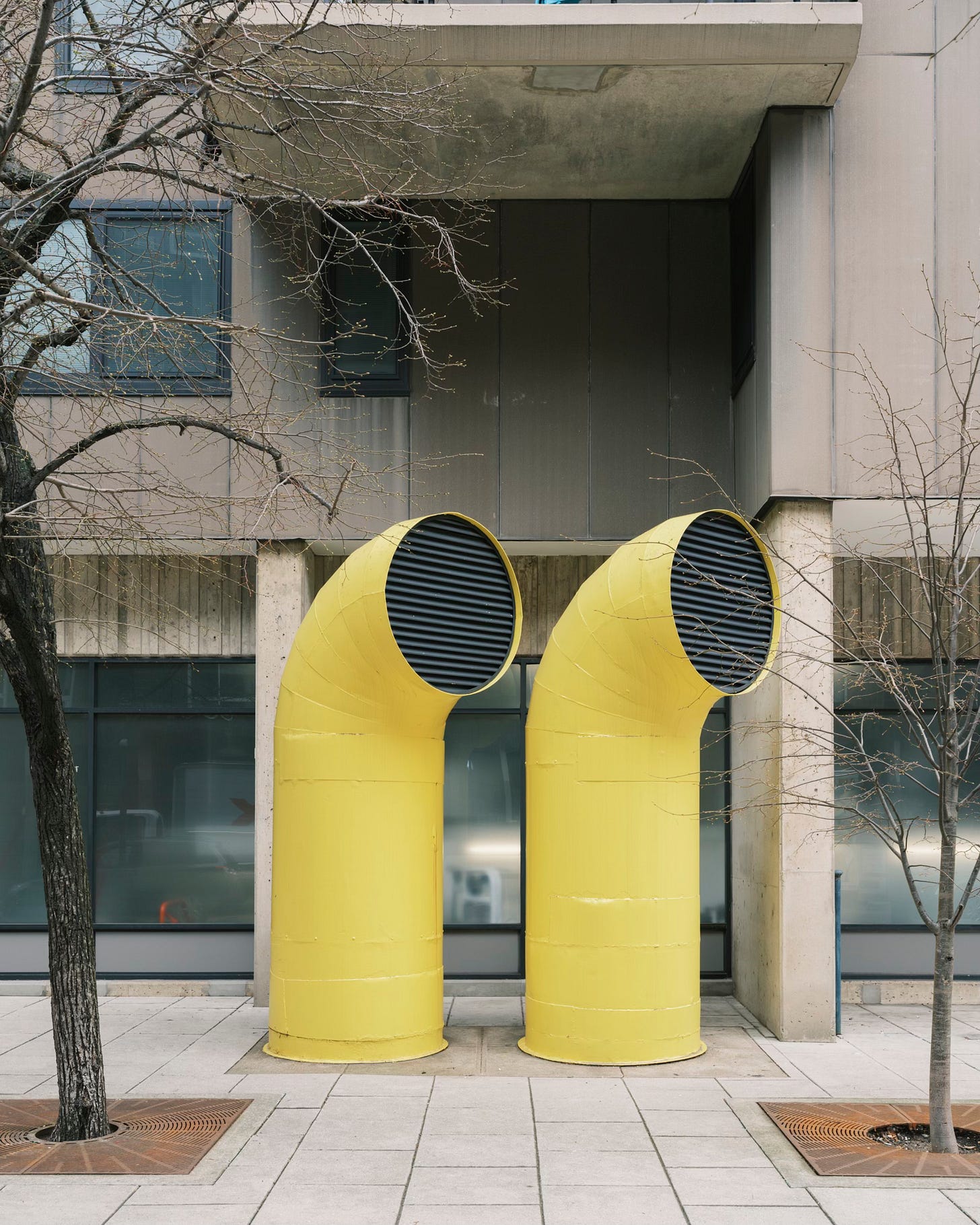

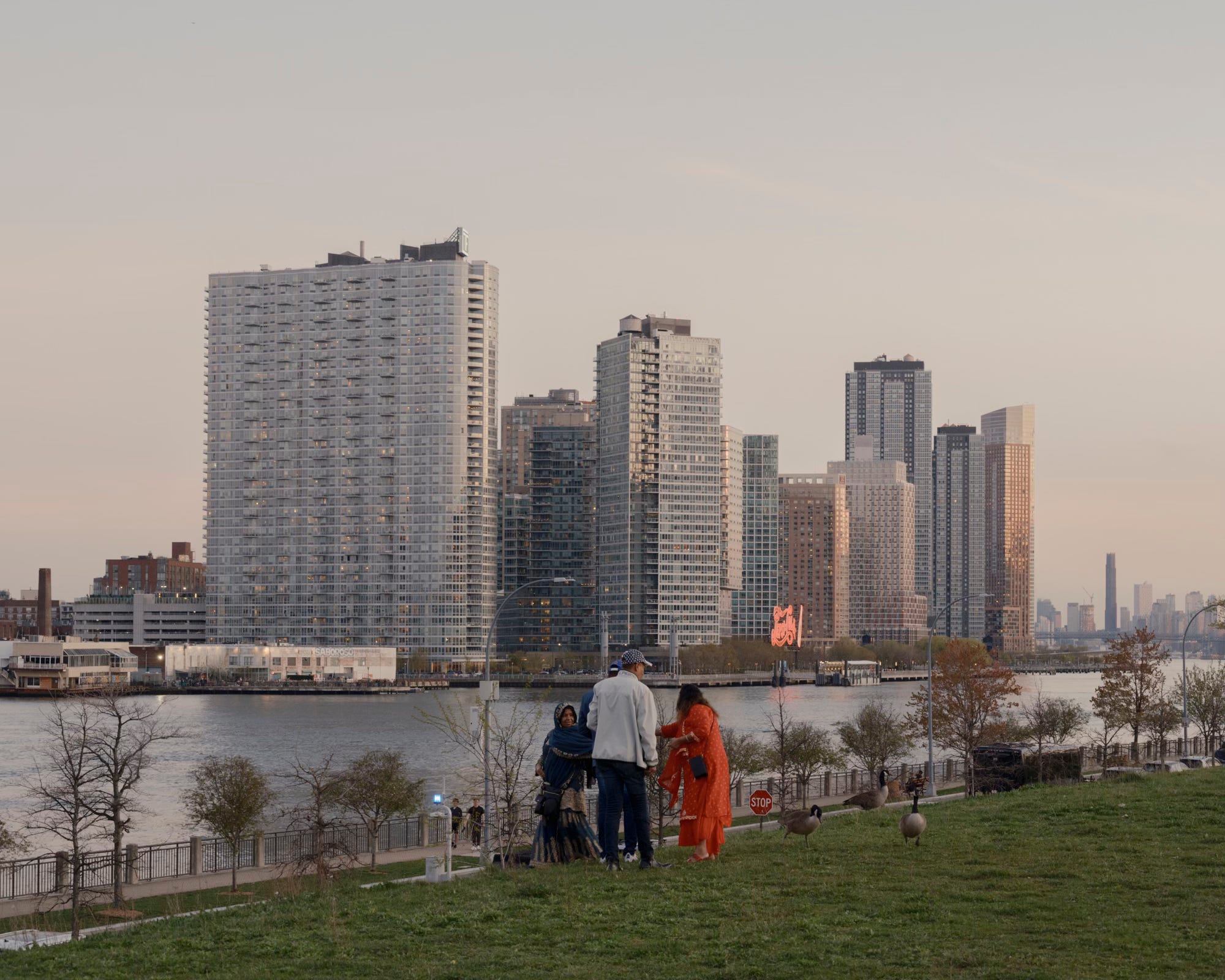
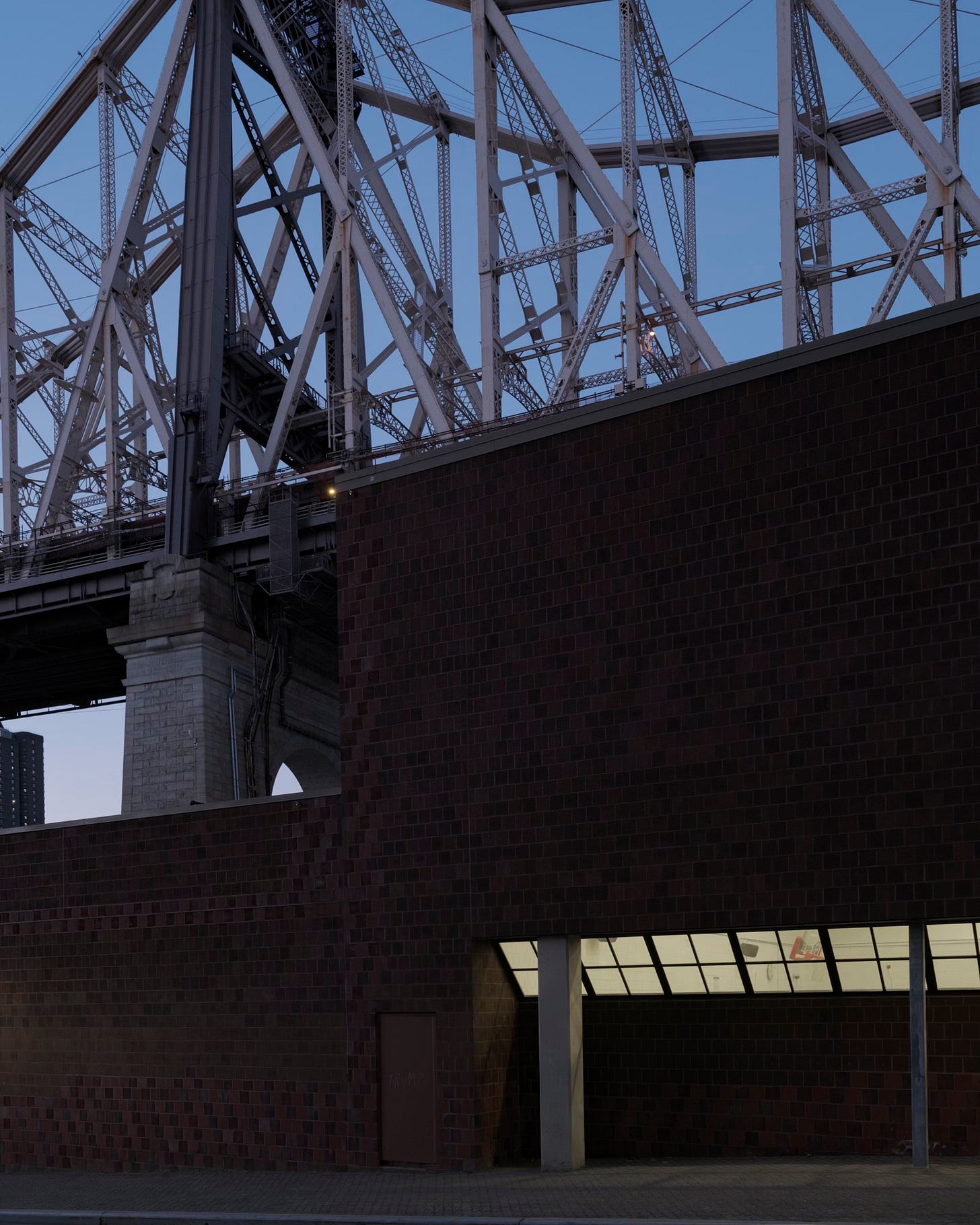
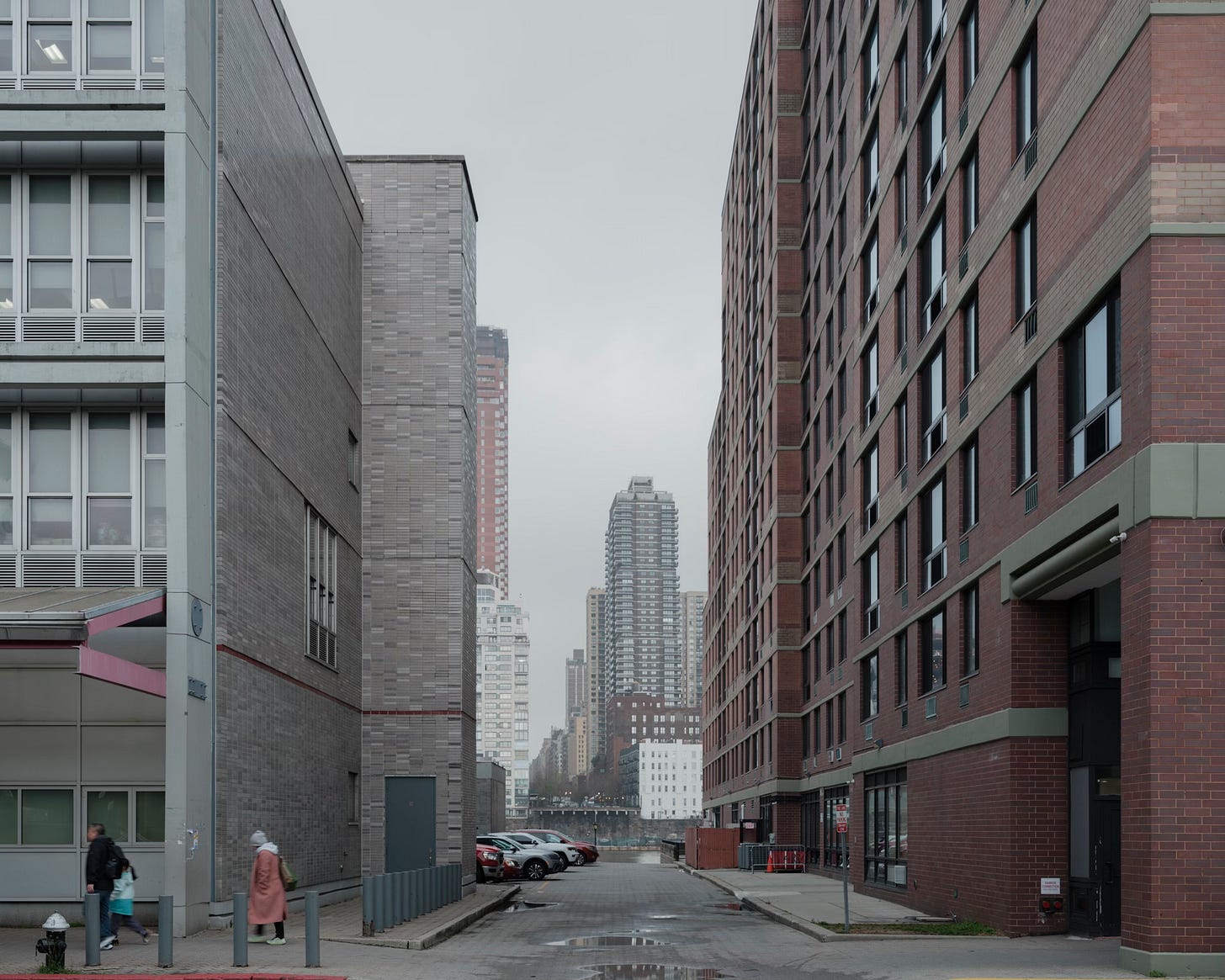
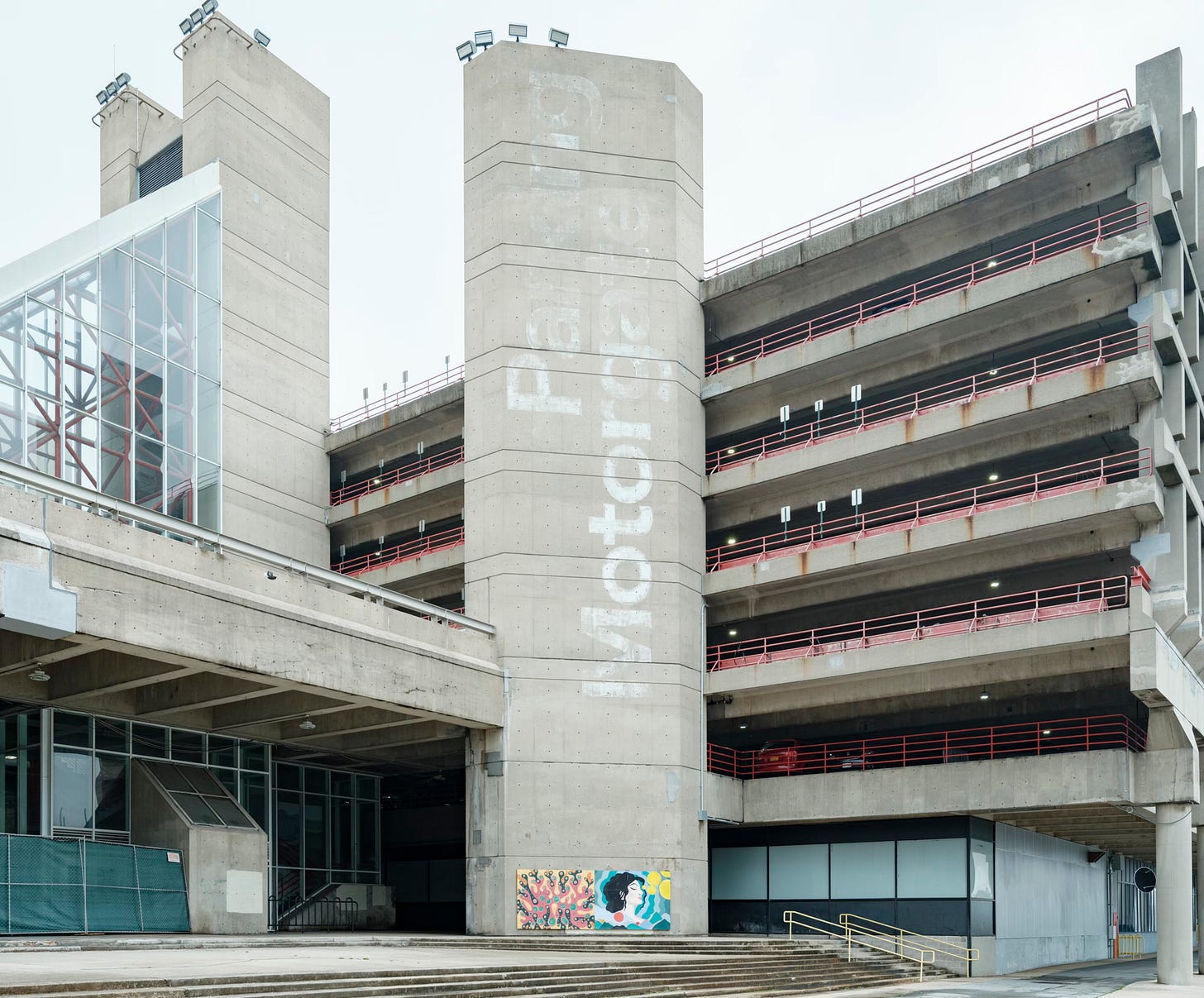
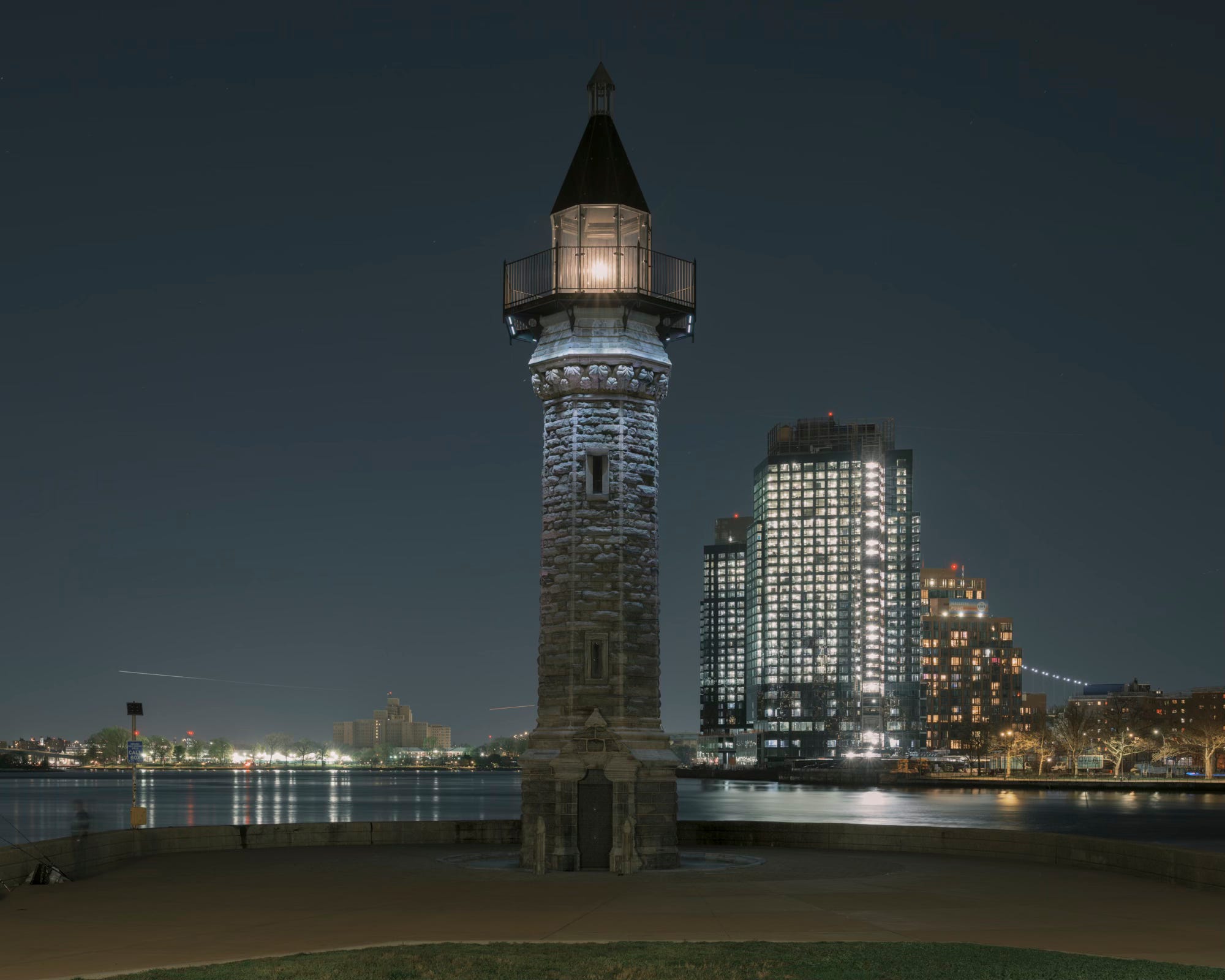


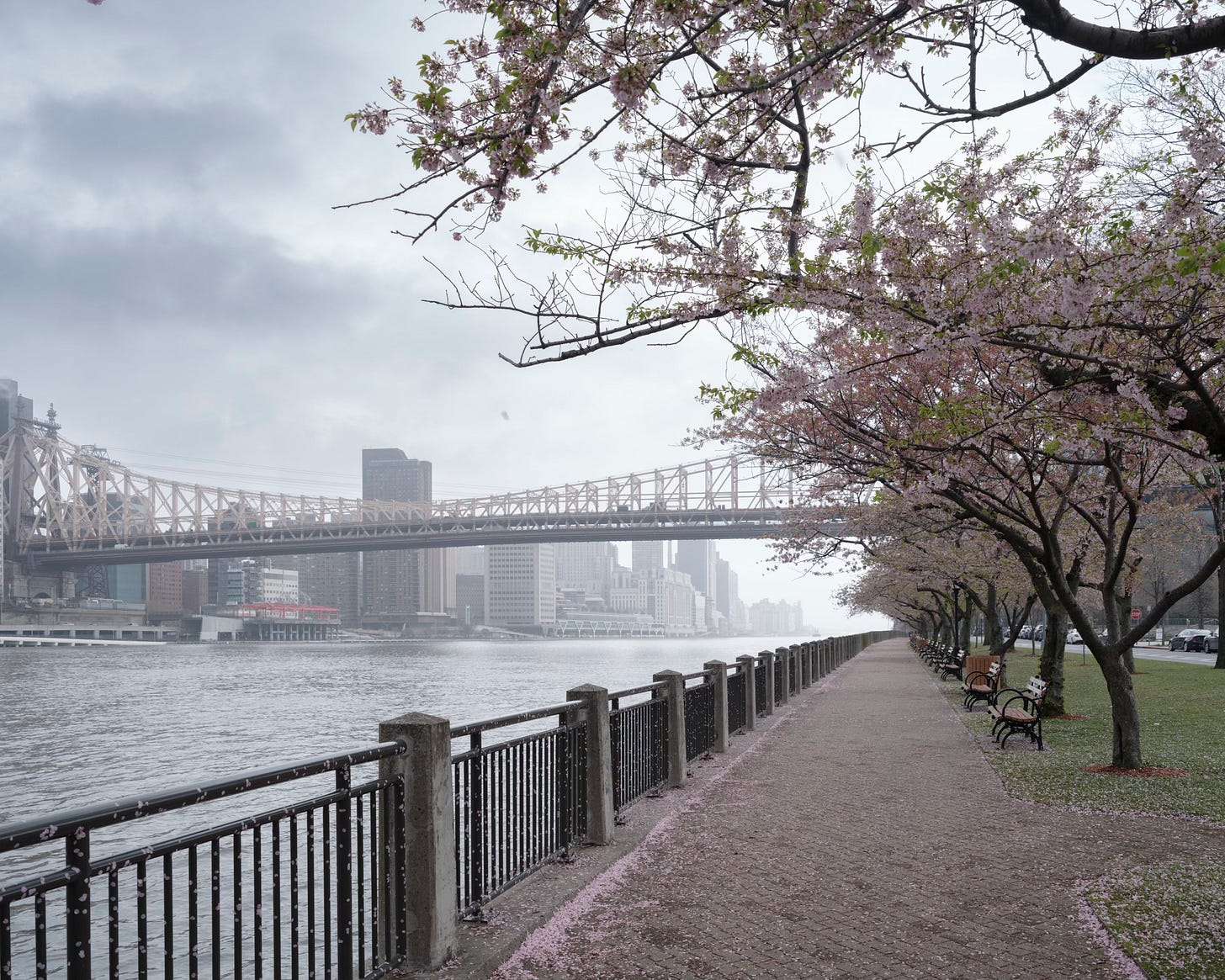
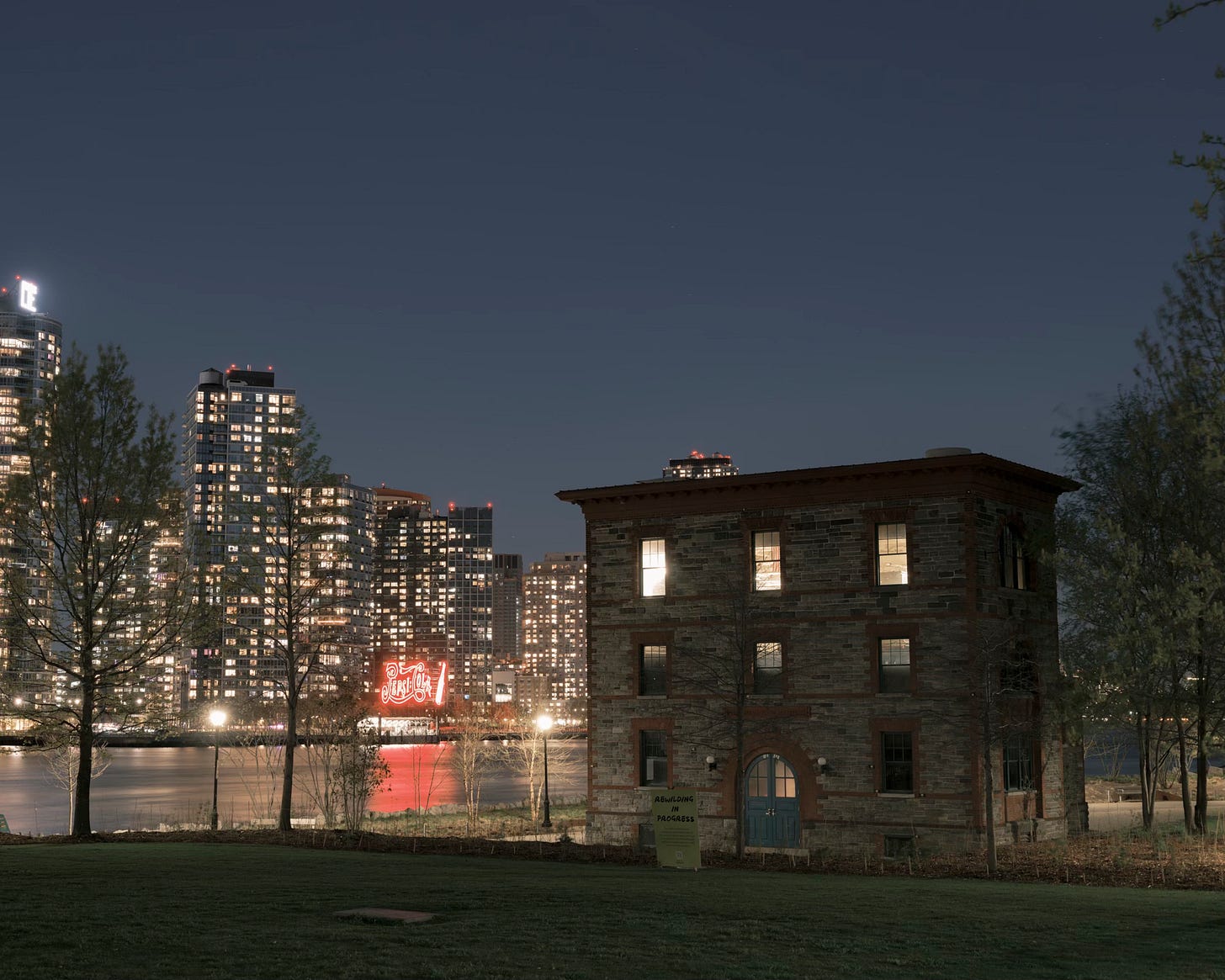
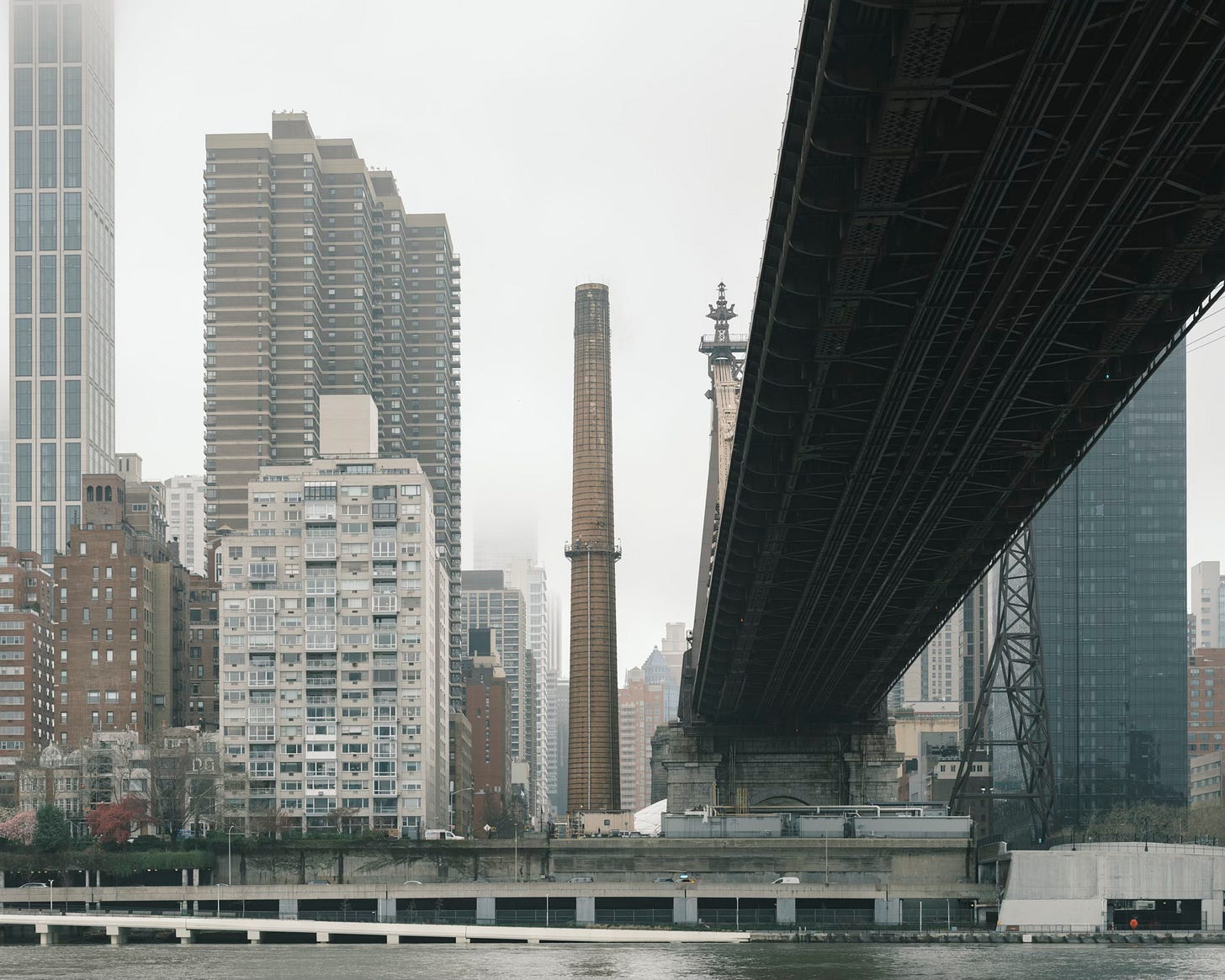


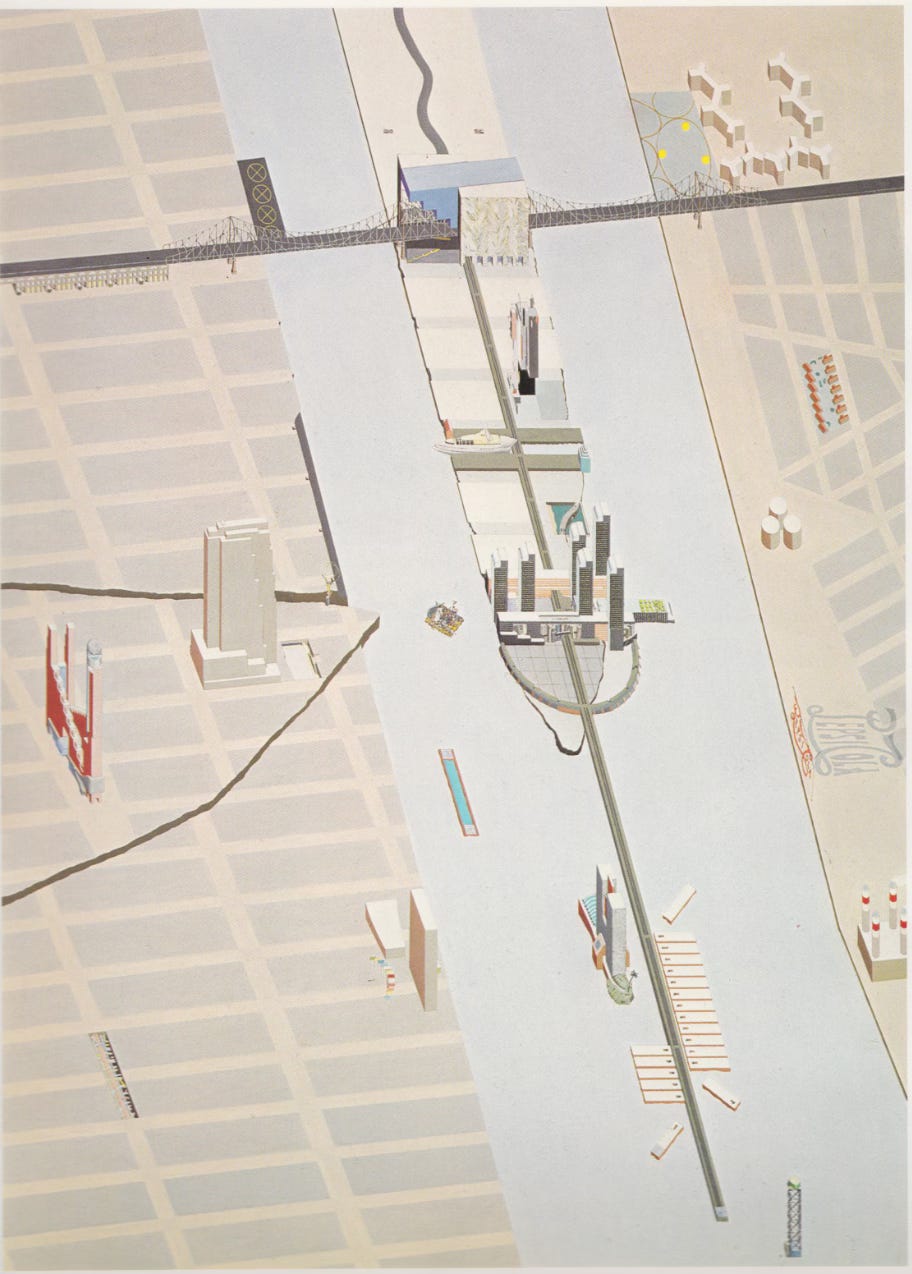


Living my best life as this hit my inbox on the day that I’m planning to take a trip to Roosevelt Island! I’m about to rattle off so much information to my poor unsuspecting boyfriend…
I’m also subscribed to Cafe Anne, but I found you both independently off each other. It’s just so amazing, but understandably logical, that you are friends. So happy that two of my favorite authors are friends!